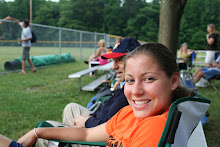
http://edgerton-digital-collections.org/galleries/iconic-----
this is where all the images I talk about are coming from.
"While electric lights were used with some success as early as the mid 1900's it was with the Harold Edgerton's 1930's invention of "Stroboscopic" photography that controlling light and time became a photographers greatest tool." I am totally intrigued by his work with strobes and motion in the studio. His athletic portfolio of work is stunning especially considering the time period. The strobe fired rapidly to capture the people's movement. He captures things that we can't see normally at all. He invented to strobhttp://edgerton-digital-collections.org/galleries/iconic/athleticse light and combined science and photography. I like the tennis players because it shows the motion of the racket and the ball. Another kind of actin photography he did was Stop-action. In the photo of a man hitting a softball, he shows how when a batter hits a softball, the bat bends and the ball caves in around the bat. This athlete had an additional challenge. The photo was taken in a darkened room, with the sound of the ball hitting the bat triggering the flash.The golf swing is amazing also because it shows the entire swing of the club and the rotation of the athlete.
Every image I go to I am constantly saying wow! Because these are stop motions that we can't see with the naked eye. I like the diver because it shows each change in direction he makes and shows his athletic ability. His most famous images include the bullet going through the apple. I like the one where the apple is being split, and then in the next image, the apple is exploding. He freezes the motion to show us something we have never seen. I keep saying this, but I think it's main reason for his work. I am also interested in his water droplet series. It isn't just 1 photo, it is a series of images that create motion; each one has been frozen in time. The playing cards!!!! wow, this is amazing! the cards appear to be flying through the air from one hand to the other! I def. want to try to recreate some of his works. It can be called copying, but I want to see how he does it!

No comments:
Post a Comment